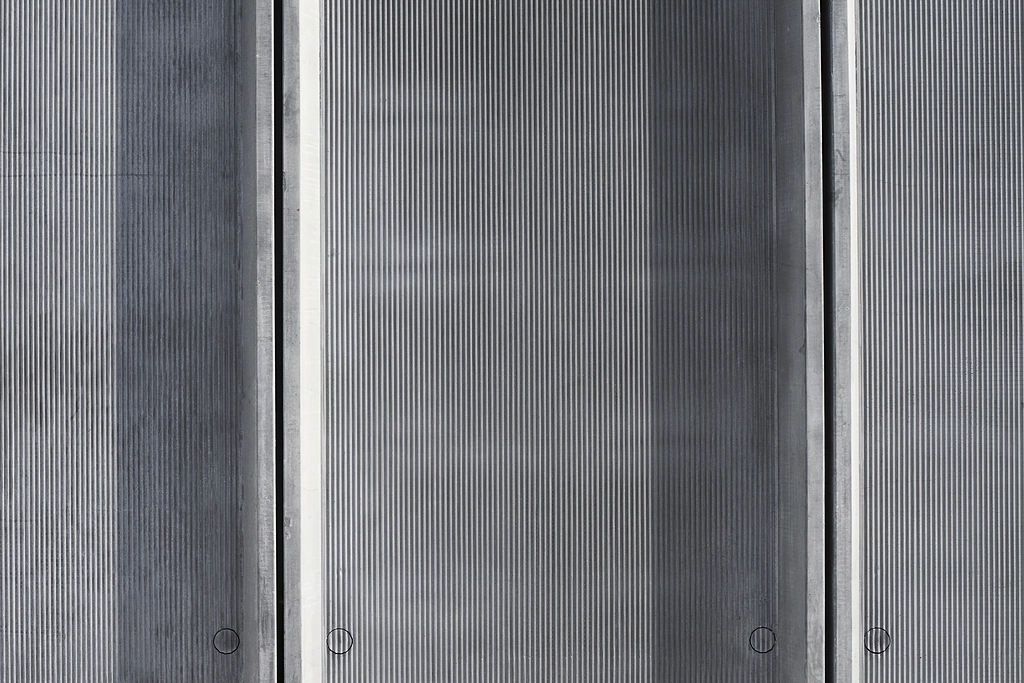مدیریت ریسک در مهندسی نما و حفاظت در برابر آتش: استراتژیهایی برای ایمنی ساختمان
مدیریت ریسک در مهندسی نما و حفاظت در برابر آتش یک جزء ضروری در طراحی و ساخت ساختمانهای معاصر است. با تکامل طرحهای معماری، تقاضا برای استراتژیهای پیشرفتهتر ایمنی آتش افزایش مییابد. مهندسی نما که بر جنبههای خارجی ساختمان تمرکز دارد، نقش محوری در ایمنی آتش دارد و شامل هم زیبایی و هم عملکرد کارآمد در شرایط آتشسوزی است. پیادهسازی استراتژیهای موثر مدیریت ریسک برای جلوگیری از گسترش آتش از طریق نماها، که میتواند به نجات جان افراد و حفظ یکپارچگی ساختاری کمک کند، حیاتی است.
حفاظت در برابر آتش در مهندسی نما
حفاظت در برابر آتش در حوزه مهندسی نما شامل ادغام مهندسی ایمنی آتش و رویکردهای مبتنی بر عملکرد است. این روشها به منظور بهبود مقاومت نماهای ساختمان در برابر آتش طراحی شدهاند تا به حفظ آتش و فراهم آوردن زمان بیشتر برای تخلیه ساکنین کمک کنند. این امر برای ایمنی ساکنین ساختمان و آتشنشانانی که به حادثه پاسخ میدهند حیاتی است. معماران، مهندسان و متخصصان ایمنی باید درک قوی از اصول و استراتژیهای مدیریت ریسک آتش داشته باشند تا بتوانند ساختمانهای مدرن ایمنی را به طور موثر طراحی و بسازند.
پیشرفتها در مواد ساختمانی و استانداردهای قانونی
توسعه مواد و طراحیهای ساختمانی نیاز به پیشرفتهایی در چارچوبهای قانونی دارد تا اطمینان حاصل شود که سیستمهای نما به استانداردهای سختگیرانه عملکرد آتش پایبند هستند. استانداردها و کدهای ساختمانی مهم، مانند کد ساختمان بینالمللی (IBC) و استاندارد NFPA 285، نقشهای کلیدی در فرآیندهای طراحی و تأیید نماهای ساختمانی دارند. این استانداردها به هماهنگسازی مواد و تکنیکهای طراحی مورد استفاده در نماهای مدرن کمک میکنند و ایمنی را با نوآوری متوازن میسازند.
مبانی مهندسی نما
مهندسی نما برای ایمنی ساختمان، بهویژه در زمینه حفاظت در برابر آتش، حیاتی است. این نیازمند برنامهریزی دقیق و درک عمیق از تعامل بیرونی ساختمان با دینامیکهای آتش و پروتکلهای ایمنی است.
ملاحظات طراحی برای ایمنی آتش
هنگام طراحی نماها، ایمنی آتش باید اولویت داشته باشد. این شامل محدود کردن گسترش آتش از طریق ایجاد بخشهای جداگانه، مسیرهای تخلیه مؤثر و انتخاب مواد مناسب که مقاومت در برابر آتش را افزایش میدهد، است. رعایت کدهای ساختمانی محلی، که با تجزیه و تحلیل جامع خطرات آتش اطلاعرسانی میشود، نیز ضروری است.
اهمیت انتخاب مواد و عملکرد در ایمنی نما
انتخاب مواد مناسب برای عملکرد آتش و یکپارچگی نماها حیاتی است. عواملی مانند قابلیت اشتعال، قابلیت احتراق و مقاومت در برابر حرارت باید بر انتخاب مواد تأثیر بگذارند. مواد غیر قابل اشتعال مانند پوشش سنگی یا فلزی میتوانند خطرات آتشسوزی را به طور قابل توجهی کاهش دهند.
استراتژیهای مدیریت ریسک
مدیریت مؤثر ریسک در مهندسی نما شامل رویکرد سیستماتیک برای شناسایی، ارزیابی و کاهش خطرات مرتبط با آتش است. این امر به حفظ ایمنی و یکپارچگی ساختارهای ساختمان کمک میکند.
شناسایی و تجزیه و تحلیل ریسک
شناسایی خطرات بالقوه اولین گام در مدیریت ریسک است. این شامل بررسی دقیق مواد، طراحی و عوامل بیرونی است که ممکن است به خطرات آتش کمک کنند. ابزارهایی مانند چکلیستها و پروتکلهای ارزیابی خطر برای این منظور استفاده میشوند.
ارزیابی ریسک
پس از شناسایی ریسکها، باید تأثیرات بالقوه آنها ارزیابی شود. این شامل ارزیابی احتمال وقوع و شدت عواقب است.
تدابیر کاهش ریسک
کاهش شامل اجرای استراتژیهایی برای کاهش یا حذف ریسکها است. این میتواند شامل استفاده از مواد مقاوم در برابر آتش و ادغام سیستمهای فایربریک در طراحی نما باشد.
سیستمهای حفاظت در برابر آتش در نماها
سیستمهای مؤثر حفاظت در برابر آتش برای کاهش خطرات آتش در ساختمانهای مدرن ضروری است. این سیستمها شامل تدابیر حفاظتی فعال و غیرفعال است.
حفاظت فعال در برابر آتش
سیستمهای حفاظت فعال در برابر آتش، آتشسوزیها را تشخیص داده، آلارمها را به صدا درآورده و اقداماتی برای کنترل یا خاموش کردن آتشها انجام میدهند. این سیستمها شامل دتکتورهای دود و سیستمهای آبپاش هستند که نیاز به نگهداری منظم دارند تا در مواقع اضطراری به طور مؤثر کار کنند.
حفاظت غیرفعال در برابر آتش
حفاظت غیرفعال در برابر آتش شامل استفاده از مواد ساختمانی مقاوم در برابر آتش و استراتژیهای طراحی است که آتش را در بر میگیرند. این تدابیر بخشی از ساختار ساختمان هستند و بدون هیچ حرکتی در زمان آتشسوزی محافظت میکنند.
کدها و استانداردهای مهندسی نما
کدها و استانداردهای ساختمانی برای اطمینان از اینکه روشهای ساخت و ساز با الزامات ایمنی مطابقت دارند، حیاتی هستند. آنها یک معیار یکنواخت برای ایمنی و کیفیت در صنعت ساختوساز فراهم میکنند.
مطالعات موردی ایمنی نما
تکامل روشهای ایمنی آتش از طریق مطالعات موردی مختلف و پذیرش رویکردهای طراحی مبتنی بر عملکرد مشاهده میشود. روشهای پیشرفته ارزیابی ریسک آتش و تکنیکهای مدلسازی آتش نیز نقش مهمی در بهبود ایمنی آتش ایفا میکنند.
در پایان، مدیریت ریسک در مهندسی نما و حفاظت در برابر آتش یک رشته چندوجهی است که نیازمند یک رویکرد جامع به طراحی، انتخاب مواد و انطباق با مقررات است. با پایبندی به استانداردهای تعیینشده و تکامل مداوم روشها، صنعت ساختوساز میتواند به طور مؤثر خطرات آتش را کاهش دهد و ایمنی ساختمانهای مدرن را افزایش دهد.

پرسشهای متداول
1. مهندسی نما چیست؟
مهندسی نما شامل طراحی و ارزیابی عملکرد سطوح خارجی ساختمان است، بهویژه در زمینه جذابیت ظاهری و مقاومت در برابر محیط، از جمله ایمنی آتش.
2. چرا حفاظت در برابر آتش در مهندسی نما مهم است؟
حفاظت در برابر آتش برای جلوگیری از گسترش آتش از طریق نمای ساختمان ضروری است، که میتواند به نجات جان افراد و حفظ یکپارچگی ساختاری کمک کند.
3. چه تدابیر حفاظت فعال در برابر آتشی رایج است؟
تدابیر رایج شامل دتکتورهای دود، آژیرهای آتش و سیستمهای آبپاش اتوماتیک است که همه برای پاسخگویی فعال به حوادث آتش طراحی شدهاند.
4. حفاظت غیرفعال در برابر آتش چگونه کار میکند؟
حفاظت غیرفعال در برابر آتش شامل استفاده از مواد مقاوم در برابر آتش و استراتژیهای طراحی است که به طور طبیعی آتش و گسترش دود را مهار میکنند بدون اینکه نیاز به هیچ حرکت مکانیکی باشد.
5. چرا کدهای ساختمانی در مهندسی نما مهم هستند؟
کدهای ساختمانی اطمینان میدهند که روشهای ساخت و ساز با استانداردهای ایمنی مطابقت دارند و به حفظ سطح یکنواخت ایمنی و کیفیت در طراحیهای ساختمانی، بهویژه در مورد خطرات کمک میکنند.

Risk Management in Facade Engineering and Fire Protection: Strategies for Building Safety
Risk management in facade engineering and fire protection is an essential component of contemporary building design and construction. As architectural designs evolve, the demand for sophisticated fire safety strategies increases. Facade engineering, which focuses on the external aspects of a building, plays a pivotal role in fire safety, encompassing both aesthetics and functional performance under fire conditions. Implementing effective risk management strategies is crucial to preventing the spread of fire through facades, potentially saving lives and maintaining structural integrity.
Fire Protection in Facade Engineering
Fire protection within the realm of facade engineering involves the integration of fire safety engineering and performance-based approaches. These methods aim to enhance the fire resilience of building facades, helping to contain fires and provide occupants with more time to evacuate. This is vital for the safety of both the building occupants and the firefighters responding to the incident. Architects, engineers, and safety professionals must have a robust understanding of fire risk management to effectively design and construct safe modern buildings.
Advancements in Building Materials and Regulatory Standards
The development of building materials and designs necessitates advancements in regulatory frameworks to ensure that facade systems adhere to stringent fire performance standards. Important standards and building codes, such as the International Building Code (IBC) and NFPA 285, play critical roles in the design and approval processes of building facades. These standards help harmonize the various materials and design techniques used in modern facades, balancing safety with innovation.
Fundamentals of Facade Engineering
Facade engineering is crucial for building safety, particularly in terms of fire protection. It requires detailed planning and a deep understanding of how building exteriors interact with fire dynamics and safety protocols.
Design Considerations for Fire Safety
When designing facades, fire safety must be a priority. This includes compartmentalization to limit fire spread, effective evacuation routes, and the selection of suitable materials that enhance fire resistance. Adherence to local building codes, informed by comprehensive fire hazard analyses, is also fundamental.
Material Selection and Performance
Choosing appropriate materials is critical for the fire performance and integrity of facades. Factors such as flammability, combustibility, and heat resistance must influence material selection. Non-combustible materials like stone or metal cladding can significantly reduce fire risks compared to combustible options.
Risk Management Strategies
Effective risk management in facade engineering involves a systematic approach to identifying, assessing, and mitigating fire-related hazards. This ensures the safety and integrity of building structures.
Risk Identification and Analysis
Identifying potential hazards is the first step in risk management. This includes a thorough review of materials, design, and external factors that might contribute to fire risks. Tools like checklists and hazard assessment protocols are used for this purpose.
Risk Evaluation
After identifying risks, their potential impacts must be evaluated. This involves assessing the likelihood of occurrence and the potential severity of consequences.
Mitigation Measures
Mitigation involves implementing strategies to reduce or eliminate risks. This can include using fire-resistant materials and incorporating firebreak systems in facade designs.
Fire Protection Systems in Facades
Effective fire protection systems are essential for mitigating fire risks. These systems include both active and passive fire protection measures.
Active Fire Protection
Active fire protection systems detect fires, sound alarms, and take action to control or extinguish fires. These systems include smoke detectors and sprinkler systems, which require regular maintenance to ensure effectiveness.
Passive Fire Protection
Passive fire protection involves using fire-resistant building materials and design strategies to contain fires. These measures are built into the structure of the building and act without any necessary motion during a fire.
Building Codes and Standards
Building codes and standards are crucial for ensuring that construction practices meet safety requirements. They provide a uniform benchmark for safety and quality in the construction industry.
Case Studies and Evolving Practices
The evolution of fire safety practices can be observed through various case studies and the adoption of performance-based design approaches. Advanced fire risk assessment methods and fire modeling techniques also play a significant role in enhancing fire safety.
In conclusion, risk management in facade engineering and fire protection is a multifaceted discipline that requires a comprehensive approach to design, material selection, and regulatory compliance. By adhering to established standards and continuously evolving practices, the construction industry can effectively mitigate fire risks and enhance the safety of modern buildings.
FAQs
1. What is facade engineering?
Facade engineering involves the design and performance evaluation of a building’s external surfaces, particularly concerning aesthetic appeal and environmental resistance, including fire safety.
2. Why is fire protection important in facade engineering?
Fire protection is crucial to prevent the spread of fire through a building’s facade, which can save lives and preserve structural integrity.
3. What are some common active fire protection measures?
Common measures include smoke detectors, fire alarms, and automated sprinkler systems, all designed to actively respond to fire incidents.
4. How does passive fire protection work?
Passive fire protection involves using fire-resistant materials and design techniques to naturally contain and prevent the spread of fire without mechanical intervention.
5. Why are building codes important in facade engineering?
Building codes ensure that construction practices meet safety standards and help maintain a uniform level of safety and quality in building designs, especially regarding fire risks.






